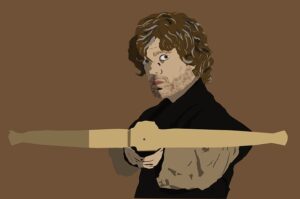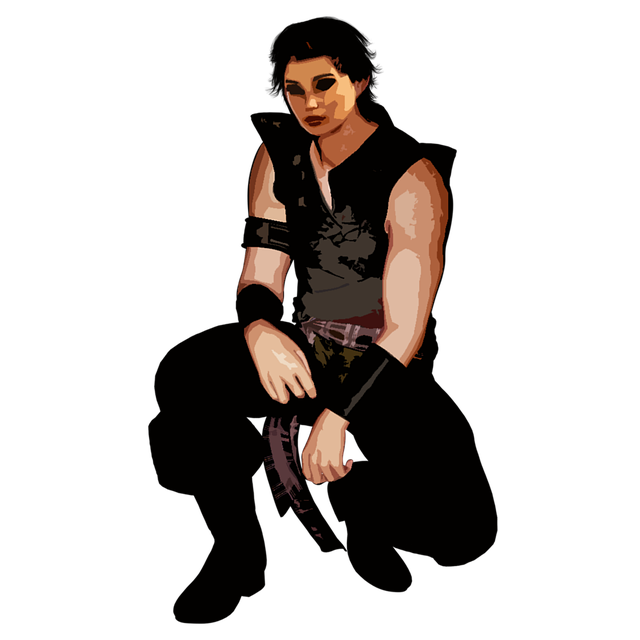To write a great story, you need to understand the different types of characters within it. One of the most important types is the round character. Round characters are subdivided into static and dynamic characters, which is essential to creating a well-rounded story.
This blog post will discuss round characters and give examples of each type.
What is a round character definition, and why are they essential to your plotline?
The definition of “round character” would be: A round character is a character in a story that is fully developed and has a complex personality.
These characters are well-rounded and three-dimensional, unlike two-dimensional and flat characters. They are complex, with various traits and emotions that are not always easy to predict. However, they are often well-developed characters that readers can relate to, making them an essential part of any good story.
(A flat character is usually one-dimensional with a simple personality that does not undergo substantial transformation. Flat characters are often used for comic relief or to provide a contrast to more complex characters.)
You can explore their motivations, fears, and hopes with round characters. This makes them much more exciting and relatable to the reader. When readers can identify with the characters in your story, they will be drawn in and more likely to stay engaged until the end. In addition, a round character helps to create an exciting plotline and provides readers with someone they can connect to emotionally.
How to create a round character that engages the reader and makes them feel invested in the story
When creating a round character, it is essential to ensure they have unique traits that stand out from the other characters. Please think of how their flaws and motivations will affect the story. Give them an interesting backstory and enough detail so that readers can connect with them on an emotional level.
Ultimately, round characters allow the reader to understand the story’s themes and principles better. Through them, the reader can explore morality, challenge their biases, and gain insight into what it means to be human – all without ever leaving the comfort of their armchairs.
The importance of creating believable motivations for your round characters
Ensuring that your round characters drive the story’s action forward cannot be overstated. Without genuine motivation, characters are unlikely to develop and progress from one point to the next in their arc. Creating interesting motivations for your round characters can help you craft an engaging story that readers connect with on a deep level.
Round character examples:
Holden Caulfield from The Catcher in the Rye, Scout Finch from To Kill a Mockingbird, Ebenezer Scrooge from A Christmas Carol, Hermione Granger from the Harry Potter series, and Katniss Everdeen from The Hunger Games.
These characters differ from each other in many ways. They are well-rounded with motivations beyond just “good” or “evil.” They are dynamic and memorable, making readers feel like they know them as people.
Round characters can be further subdivided into two categories: static and dynamic

Static characters
Static round characters remain essentially the same throughout the story
A static round character’s personality remains essentially the same despite their experiences; they may experience growth, but it’s more of an internal transformation than a visible behavior change.
Static characters are the protagonist’s steady confidants and supporters. They provide a stable presence in an otherwise changing environment, allowing the reader to understand better the story’s leading events and characters.
Here are a few examples of static round characters:
Gandalf from The Lord of The Rings and Tyrion Lannister from Game of Thrones. Both remain relatively unchanged throughout their respective stories.
Pip from the Charles Dickens novel Great Expectations. Pip is a young boy raised in poverty but has great expectations for his future. He goes through many adventures and hardships but remains essentially the same character throughout the story.
Jay Gatsby is a classic example of a static round character. He starts as this mysterious figure, and we learn more about him as the story progresses. However, he remains pretty much the same regarding his personality and motivations. Fitzgerald uses Gatsby to explore the American dream – its allure and limitations – and Gatsby’s character serves as a lens through which readers can view this theme.
Dynamic characters
A dynamic character evolves and changes as a result of their experiences
Dynamic round characters are complex characters defined by their transformation over time as they experience growth or change due to an event or series of events in the story.
Here are a few examples of dynamic round characters

Harry Potter from JK Rowling’s books and Katniss Everdeen from The Hunger Games trilogy. These characters are significantly different from how they were at the beginning of their stories and have undergone emotional changes that shape who they are by the end.
Atticus Finch from Harper Lee’s To Kill a Mockingbird is an excellent example of a dynamic round character. At the novel’s start, Atticus is portrayed as a strict but kind-hearted father who believes in justice and equality. By the end, however, he has undergone several life-changing experiences that have transformed his worldview and made him more compassionate towards others.
Lady Macbeth from Macbeth. She is driven by ambition and has a clear definition of right and wrong that changes throughout the story as she descends into madness.
Scrooge from Charles Dickens’s A Christmas Carol. He starts as a grumpy and miserly old man and ends the story as one who has learned to appreciate life.
Jaime Lannister from Game of Thrones, Severus Snape from Harry Potter, and Gollum from The Lord of the Rings are other dynamic round characters who undergo significant changes throughout the story’s course.
Whether you’re a writer looking for ways to deepen your plot, or just an avid reader seeking new stories to explore, round characters are a great tool to have in your arsenal.
By understanding the definition of round characters and their subdivisions, readers can better appreciate the intricacies of fiction and gain a deeper understanding of the story.
Examples of well-done round characters
Lucy Pevensie from The Chronicles of Narnia provides an excellent example of a dynamic round character. As she enters Narnia, she is initially a scared young girl who lacks faith; however, over time, she gains courage and begins to believe in herself and her abilities as a warrior.
Another excellent example of a dynamic round character is Brienne of Tarth from Game of Thrones. Brienne starts as a young girl ridiculed for her appearance and gender. She dreams of becoming a knight but is constantly told that she cannot be one because she is a woman.
Brienne is a valuable warrior and earns the respect of many throughout the novel. She eventually becomes a knight and even helps save the kingdom. Brienne’s story is one of determination and strength in facing adversity.
No matter what type of round character you’re writing, it’s essential to make sure that they are believable and relatable so that your readers can quickly identify with them. Creating characters who feel like real people is key to a successful story and will help keep your readers engaged.
Round character development tips to make sure your readers fall in love with them

– Delve deep into their backstory. Everyone has a unique story, and understanding your character’s history and how it informs their current beliefs will help you create an even more realistic version of them in your novel.
– Give them meaningful goals to strive for. Round characters must have something to fight against or work towards. Doing this will help the reader connect with them on an emotional level, as they’ll understand why your character is motivated to act in a certain way.
– Allow room for growth and change. Like in real life, characters must be allowed to grow and develop throughout their journey to remain interesting to readers. If they start as static, give them something to strive towards that causes an internal conflict.
Round characters are one of the most important aspects of fiction writing. By understanding the definition of a round character and how they’re divided into static and dynamic characters, you can create a richer story world with realistic characters your readers will love.
Conclusion
To create an unputdownable thriller, you must first understand how to craft interesting and engaging characters. Round characters are essential in any good story, but especially in thrillers, where readers need to feel invested in the character’s journey.
By subdividing your round characters into static and dynamic types, you can more easily control the level of engagement throughout your novel. As you continue developing your plotline and creating believable characters, keep these examples of well-done round characters in mind for inspiration.
If you’re working on your first novel and are looking for more help with your writing, please check out my other writing articles at https://ullahakanson.com/blog/
Thanks for reading!
All the best,
Ulla

